In math, definitions are the first thing we learn to build our knowledge. The concepts of equations and expressions are important, but how are they connected?
So, what is the difference between equations and expressions? An expression contains numbers, variables (letters), and symbols such as +, -, etc. An equation has an equality symbol (the equal sign, or “=”) and two expressions: there is one expression on each side of the equality symbol. An expression would be 2x + 6, while 2x + 6 = 4x – 8 would be an equation.
Of course, there are all types of expressions (linear expressions, quadratic expressions, etc.), and we can combine them in lots of ways to form equations.
In this article, we’ll talk about equations and expressions, as well as how they differ and how they are connected. We’ll also look at some examples of each to make the concepts clear.
Let’s get started.
Equations vs. Expressions
An expression contains numbers, variables (in the form of letters), and symbols for operations (such as +, -, *, and /). For example, 2x + 3 and 5x2 – 4 are both expressions. Remember that an expression never contains an equality symbol.
An equation always contains an equality symbol (an equal sign or “=”), along with two expressions (one on each side of the equality symbol). An equation has the following form:
- Expression 1 = Expression 2
The table below compares expressions and inequalities at a glance.
| Expression | Equation |
|---|---|
| Does not have an equality symbol. | Always has an equality symbol. |
| Contains symbols: numbers, variables, etc. | Contains two expressions, one on each side of the =. |
| Does not have a solution, due to no equality symbol. | May have one or more solutions in some cases. |
| Used to represent a quantity, a polynomial, etc. | Used to state that two expressions are equal to one another. |
between expressions and equations.
Before we go further in comparing these two concepts, let’s define them, starting with expressions.
What Is An Expression?
An expression (or mathematical expression) is a combination of symbols, including:
- Numbers, such as 1, 5, or 3.14
- Variables, such as x, y, or z
- Operations, such as +, -, *, / (addition, subtraction, multiplication, division)
- Functions, such as f(x) or g(x, y)
- Grouping symbols, such as () or [] (parentheses and brackets)
Note that there are a finite number of symbols in an expression. Also, the order of the symbols matters.
For example, consider the following two expressions with the same symbols but in a different order:
- The expression 6 – 4 has three symbols: 6, -, and 4, with a value of +2.
- The expression 4 – 6 has the same three symbols, but in a different order: 4, -, and 6, with a value of -2.
Note that changing the order of other symbols can also change the value of an expression. For example, consider the following two expressions with the same symbols but in a different order:
- The expression 2*(8 – 5) has 7 symbols: 2, *, (, 8, -, 5, and ), with a value of 2*(3) = 6.
- The expression (2*8) – 5 has the same 7 symbols, but in a different order: (, 2, *, 8, ), -, and 5, with a value of (16) – 5 = 11.
This shows the importance of having an order of operations to determine how to proceed when evaluating an expression. Remember the common acronym PEMDAS:
- P – Parentheses (or brackets, or any grouping symbol)
- E – Exponents (powers)
- M – Multiplication
- D – Division
- A – Addition
- S – Subtraction
Note that we start at the top with P (Parentheses) and work our way down the list to S (subtraction). We also work from left to right, and assume that M, D (multiplication, division) have the same precedence, just as A, S (addition, subtraction) have the same precedence.
Remember that it is also possible for a group of symbols to have no meaning or to not be well-formed (having the correct type of inputs and number of inputs in the proper places). For example, consider the following invalid expression:
- (6*2) +
The expression is invalid, because after we evaluate the multiplication inside parentheses to get 12, there is nothing to add to 12. We need another addend after the “+” symbol for this expression to be well-formed.
What Is An Equation?
An equation is a combination of symbols that always includes an equality symbol and two expressions (one on each side of the equality symbol).
An equation can be as simple as one telling us the result of an operation, such as division. For example, the equation
- 10 / 2 = 5
Simply tells us that “10 divided by 2 is equal to 5. There are no variables in this equation.
However, an equation can contain variables in one or both expressions. For example, the equation
- 2x + 5 = 10
contains a variable in one expression (2x + 5 contains the variable “x”). In this case, we say that the equation has a variable on the left side.
An equation can also have a variable on the right side. For example, the equation
- 18 = 3x – 12
has a variable on the right side.
It is also possible for an equation to have variables on both sides. For example, the equation
- 2x + 4 = 6x – 12
has a variable on both the left side and the right side.
Solving An Equation
We cannot solve an expression, since there is no equality symbol. However, we can solve an equation that contains variables in some cases (if any solutions exist).
The set of solutions for an equation is any value of a variable (or multiple variables) that makes the equation true.
For example, the equation 2x + 6 = 14 has a solution of x = 4, since 2*4 + 6 = 8 + 6 = 14. So, a value of x = 4 makes the equation true, and so it is a solution.
Some equations have no solution. For example, the equation x + 6 = x + 5 has no solution, since there is no value of x such that 6 = 5.
Examples Of Equations & Expressions
Let’s look at some examples of various types of expressions and equations
Example 1: A Constant Expression
A constant expression is really just a number, which never changes. Some examples of constant expressions include:
- 5
- 12
- 8.67
- 0.0025
- 0
A constant expression of zero is often the goal in solving an equation, since it allows us to solve a linear equation or factor a quadratic or higher order equation to find the solutions.
Example 2: A Linear Expression
A linear expression has the form ax + b, where a and b are constant values, a is not zero, and x is a variable. Some examples of linear expressions include:
- x + 5
- 2x + 6
- -4x + 9
- -x – 7
- 8x
In the last case, the value of b is zero, which is allowed for a linear expression. Often, we factor quadratic and higher order polynomials into a product of linear expressions to help us find the roots.
Note that the variable in a linear expression need not be x – it could be y, z, t, or any other variable.
Example 3: A Quadratic Expression
A quadratic expression has the form ax2 + bx + c, where a, b, and c are constant values, a is not zero, and x is a variable. Some examples of quadratic expressions include:
- x2 + 4x + 2
- 2x2 – 3x – 7
- -3x2 + 6x + 9
- x2 – 9
- 2x2 + 6x
- 4x2
In the fourth example, the value of b is zero. In the fifth example, the value of c is zero. In the sixth example, the values of b and c are both zero.
Often, we use the quadratic formula to solve a quadratic equation with a zero expression on one side.
Note that the variable in a quadratic expression need not be x – it could be y, z, t, or any other variable.
Example 4: A Cubic Expression
A cubic expression has the form ax3 + bx2 + cx + d, where a, b, c, and d are constant values, a is not zero, and x is a variable. Some examples of cubic expressions include:
- x3 + 8x2 + 2x + 4
- 5x3 – 3x2 – 7x – 9
- x3 – 3x + 1
- 2x3 – 4x2 + 11
- 3x3 – 24
- x3
In the third example, the value of b is zero. In the fourth example, the value of c is zero. In the fifth example, the values of b and c are both zero. In the sixth example, the values of b, c, and d are all zero.
Often, we group pairs of terms in a cubic in an attempt to factor and solve.
Note that the variable in a cubic expression need not be x – it could be y, z, t, or any other variable.
Example 5: A Radical Expression
A radical expression is an expression that contains a radical symbol, √.
The radical symbol can have any index, including 2, 3, 4, etc. However, the “default” index is 2, so if no index is written above and to the left of the radical symbol, we assume an index of 2.
Some examples of radical expressions include:
- √3 (the square root of 3)
- 3√x (the cube root of x)
- √(x + 3)
- √(x2 + 4x – 5)
- √x + √5 + 8
To solve an equation with radical expressions, we usually isolate the radical and raise both sides of the equation to the power of the index.
Example 6: A Linear Equation
A linear equation has the form ax + b = 0, where a and b are constant values, a is not zero, and x is a variable. Some examples of linear equations include:
- x + 5 = 0
- 2x + 6 = 0
- -4x + 9 = 0
- -x – 7 = 0
- 8x = 0
In the last case, the value of b is zero, which is allowed for a linear equation. Note that we can reduce an equation of the form ax + b = cx + d to the form above by subtraction to get (a – c)x + (b – d) = 0.
Often, we factor quadratic and higher order polynomials into a product of linear expressions to help us find the roots (since we can solve a linear equation that sets a linear expression equal to zero).
The unique solution to the equation ax + b = 0 is x = -b/a.
Note that the variable in a linear equation need not be x – it could be y, z, t, or any other variable.
You can see a graph of a linear function below.
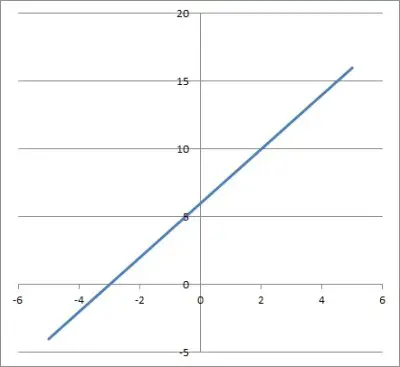
Example 7: A Quadratic Equation
A quadratic equation has the form ax2 + bx + c = 0, where a, b, and c are constant values, a is not zero, and x is a variable. Some examples of quadratic equations include:
- x2 + 4x + 2 = 0
- 2x2 – 3x – 7 = 0
- -3x2 + 6x + 9 = 0
- x2 – 9 = 0
- 2x2 + 6x = 0
- 4x2 = 0
In the fourth example, the value of b is zero. In the fifth example, the value of c is zero. In the sixth example, the values of b and c are both zero.
Often, we use the quadratic formula to solve a quadratic equation with a zero expression on one side. If the terms were scattered on both sides, we could collect both on one side to get the form given above.
For example, 3x2 + 5x +12 = 3 can be written as 3x2 + 5x + 9 = 0 (after subtracting 3 from both sides of the equation).
The solutions to the quadratic equation ax2 + bx + c = 0 is given by the quadratic formula (shown below).
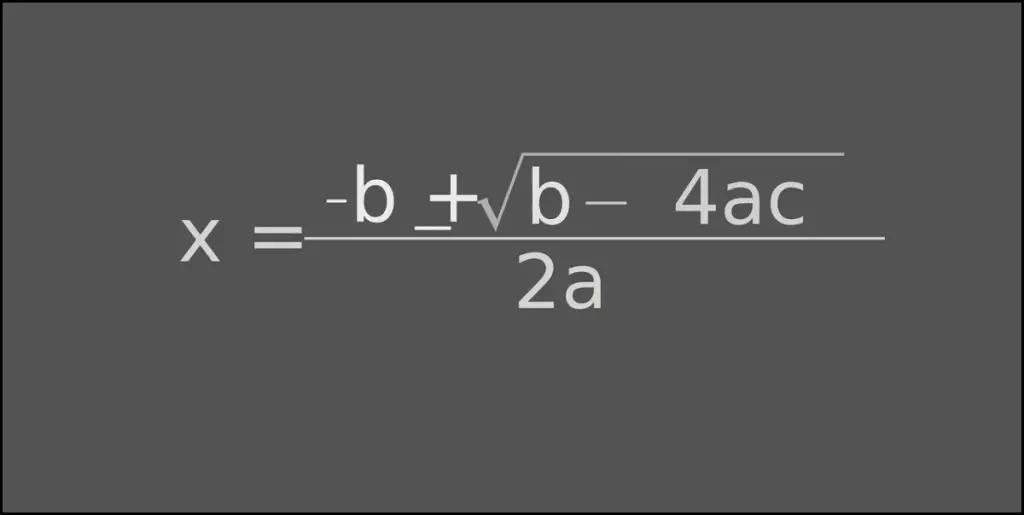
Note that the variable in a quadratic equation need not be x – it could be y, z, t, or any other variable.
You can see the graph of a quadratic function below.
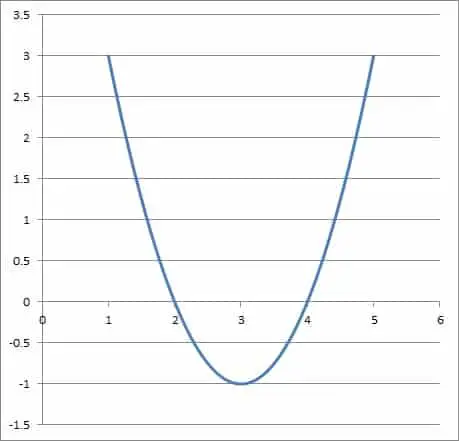
Example 8: A Cubic Equation
A cubic equation has the form ax3 + bx2 + cx + d, where a, b, c, and d are constant values, a is not zero, and x is a variable. Some examples of cubic equations include:
- x3 + 8x2 + 2x + 4 = 0
- 5x3 – 3x2 – 7x – 9 = 0
- x3 – 3x + 1 = 0
- 2x3 – 4x2 + 11 = 0
- 3x3 – 24 = 0
- x3 = 0
In the third example, the value of b is zero. In the fourth example, the value of c is zero. In the fifth example, the values of b and c are both zero. In the sixth example, the values of b, c, and d are all zero.
Often, we group pairs of terms in a cubic equation in an attempt to factor and solve. Remember that a cubic equation will always have at least one real solution (there will be either 1 or 3 real solutions).
Note that the variable in a cubic equation need not be x – it could be y, z, t, or any other variable.
You can see the graph of a cubic function below.
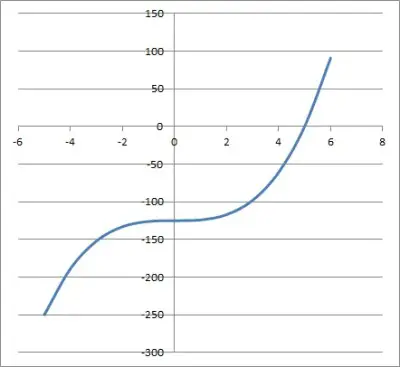
Example 9: A Radical Equation
A radical equation is an equation that contains a radical symbol, √.
The radical symbol can have any index, including 2, 3, 4, etc. However, the “default” index is 2, so if no index is written above and to the left of the radical symbol, we assume an index of 2.
Some examples of radical equations include:
- 3√x = 4
- √(x + 3) = 8
- √(x2 + 4x – 5) = 5
- √x + √5 = 2
To solve a radical equation, we usually isolate the radical and raise both sides of the equation to the power of the index.
For example, the second equation above would be solved as follows:
- √(x + 3) = 8
- (√(x + 3))2 = 82 [square both sides, since the index is 2]
- x + 3 = 64
- x = 61
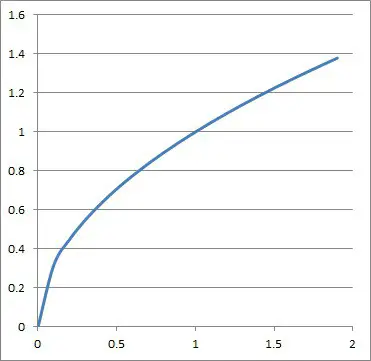
Conclusion
Now you know the difference between equations and expressions, as well as how they are connected.
I hope you found this article helpful. If so, please share it with someone who can use the information.
Don’t forget to subscribe to our YouTube channel & get updates on new math videos!


